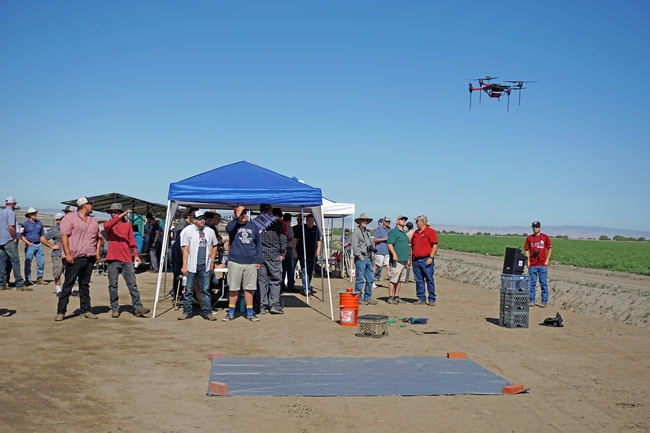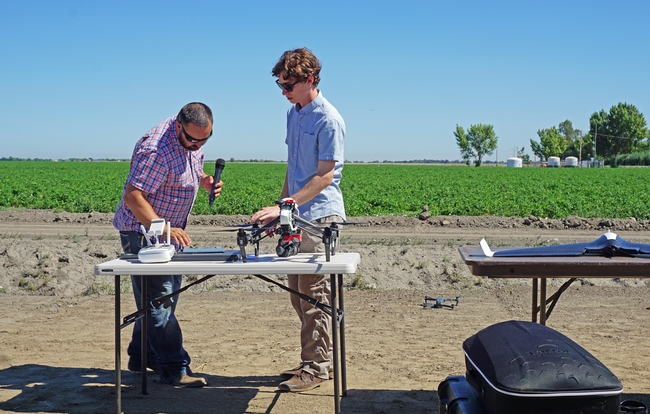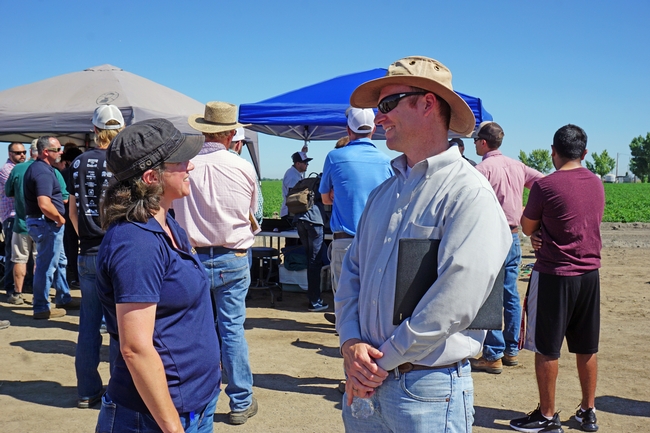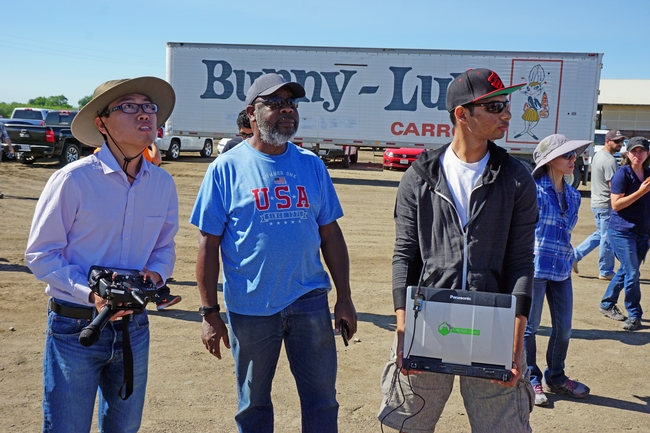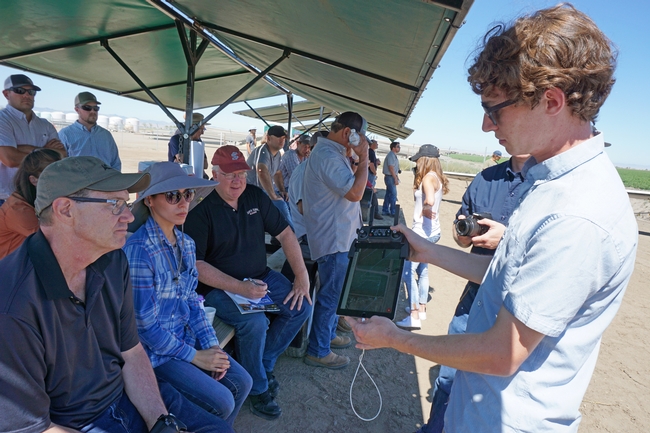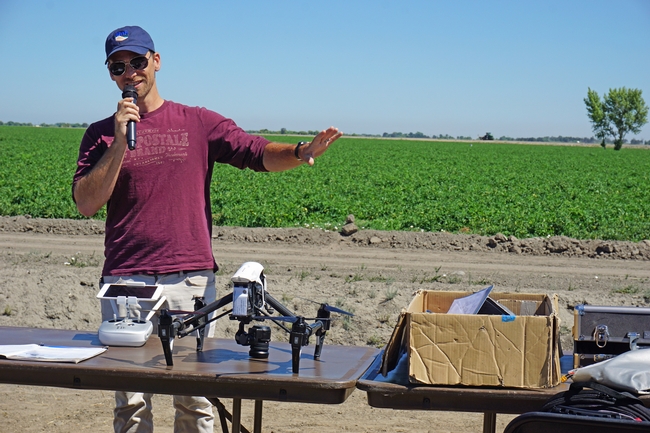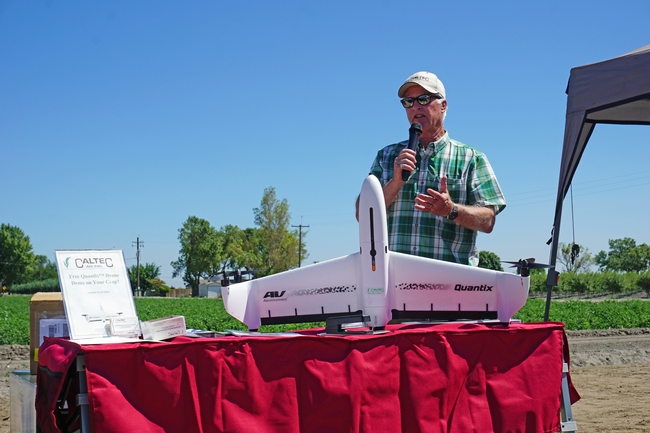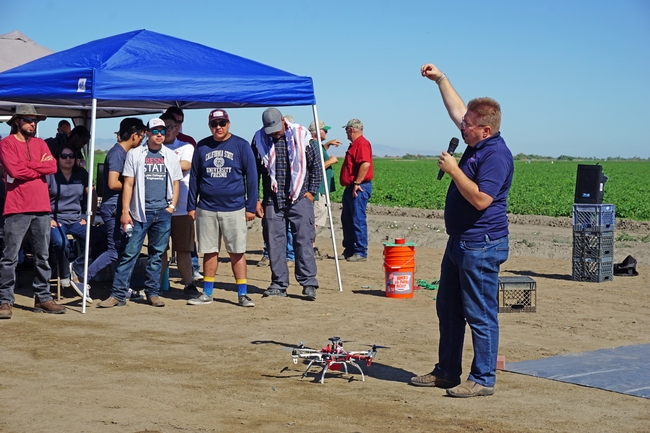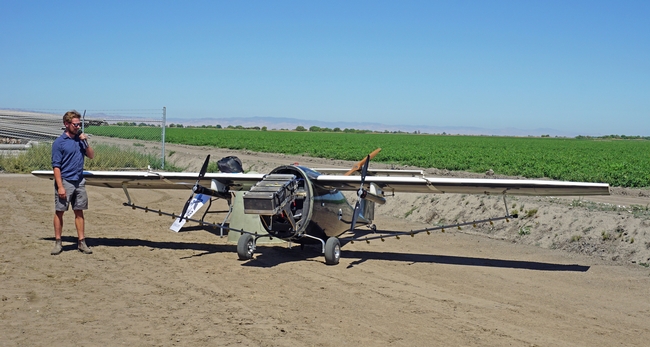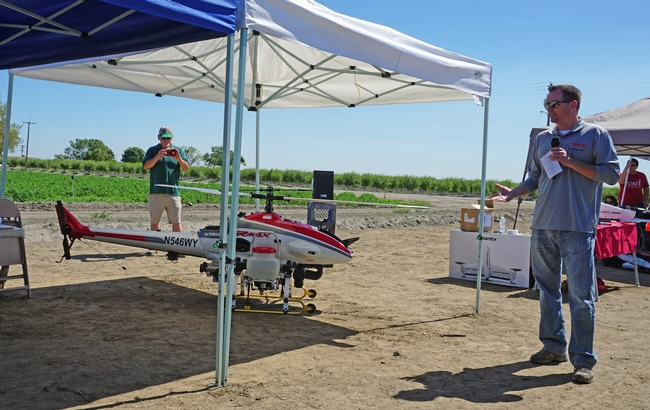Posts Tagged: drones
No Labor Day Holiday for Honey Bees
On Labor Day, a federal holiday, we celebrate the our country's labor movement, our gratitude, and our achievements. But there is no Labor Day...
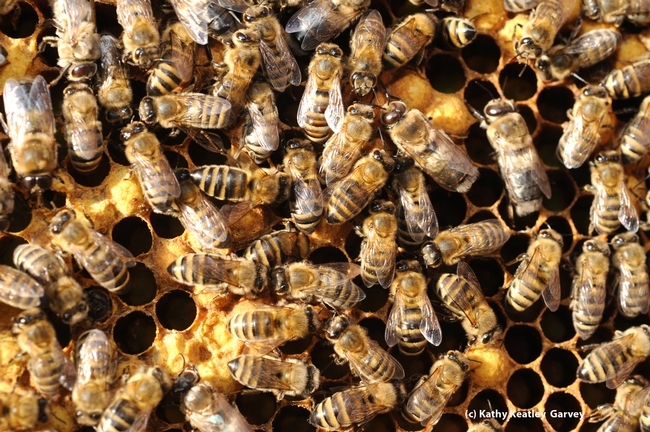
Worker bees are aptly named. They comprise most of the bees in the colony and do most of the work. (Photo by Kathy Keatley Garvey)
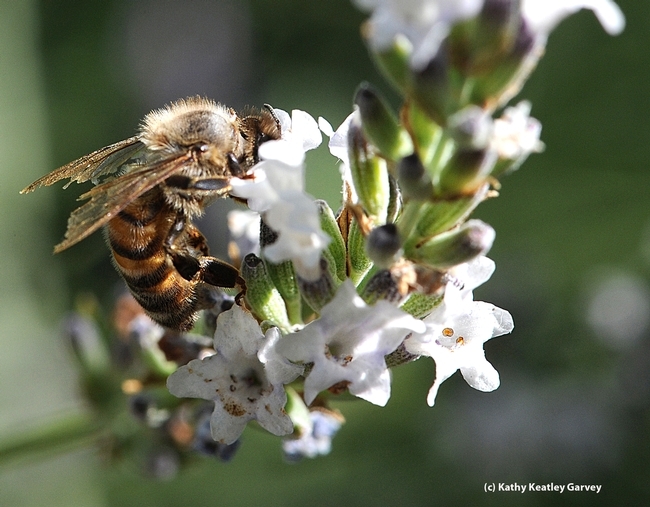
This aging worker bee is all tattered and torn. (Photo by Kathy Keatley Garvey)
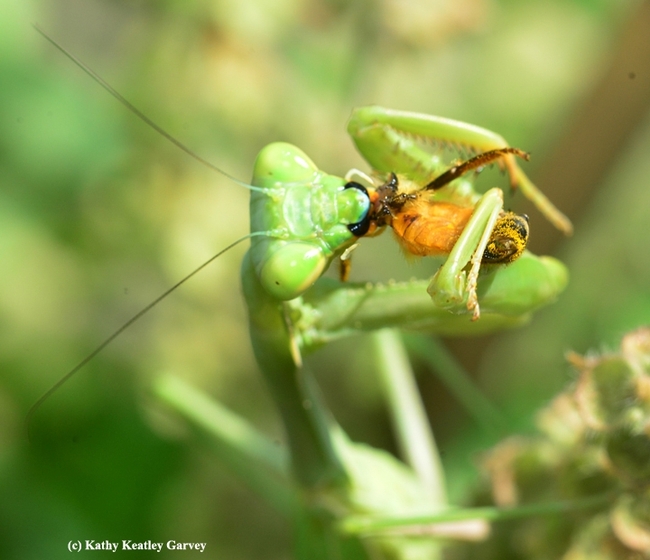
Foraging can be dangerous. Here a praying mantis has just nabbed a worker bee. (Photo by Kathy Keatley Garvey)
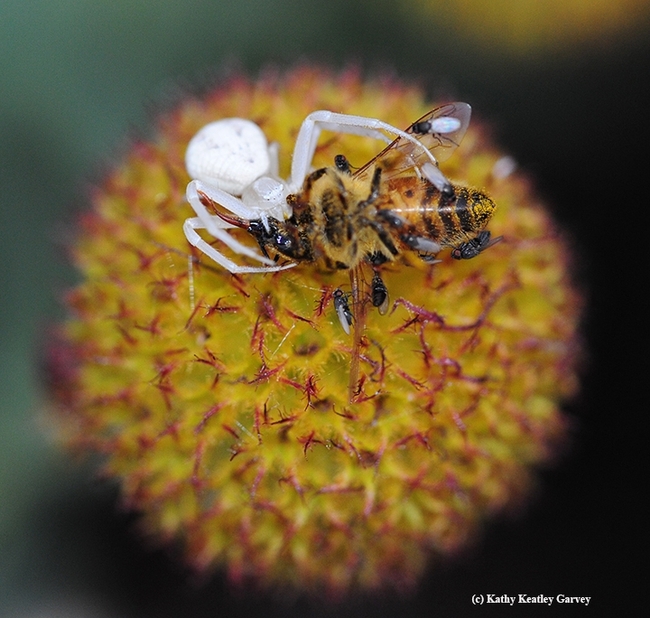
A crab spider feeding on a honey bee. Crab spiders are ambush predators. (Photo by Kathy Keatley Garvey)
Learn About Honey Bees at the California Honey Festival
If you haven't been around honey bees much, and can't distinguish the queen from a worker bee (sterile female) or drone (male bee), head over the...
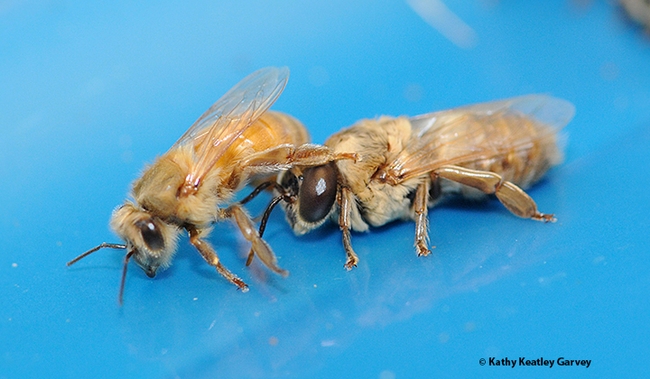
The worker bee (sterile female) is at left, and the drone (male) is at right. (Photo by Kathy Keatley Garvey)
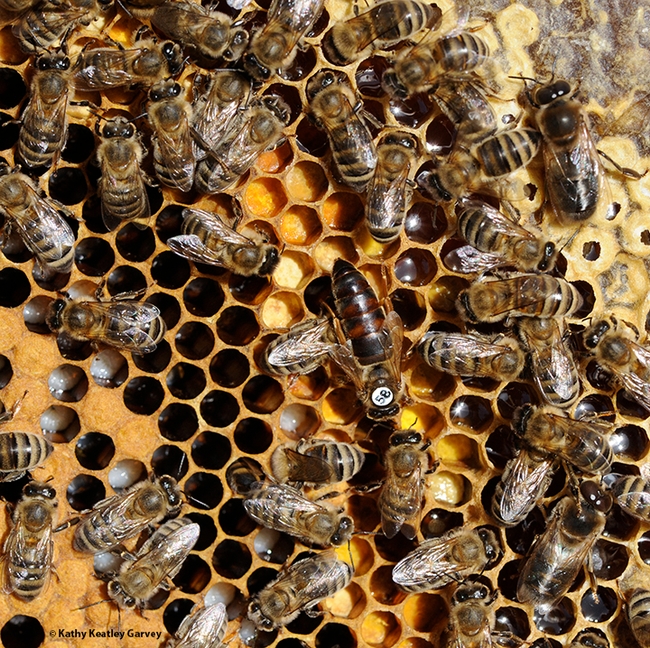
Can you find the queen, the workers and the drones? (Photo by Kathy Keatley Garvey)
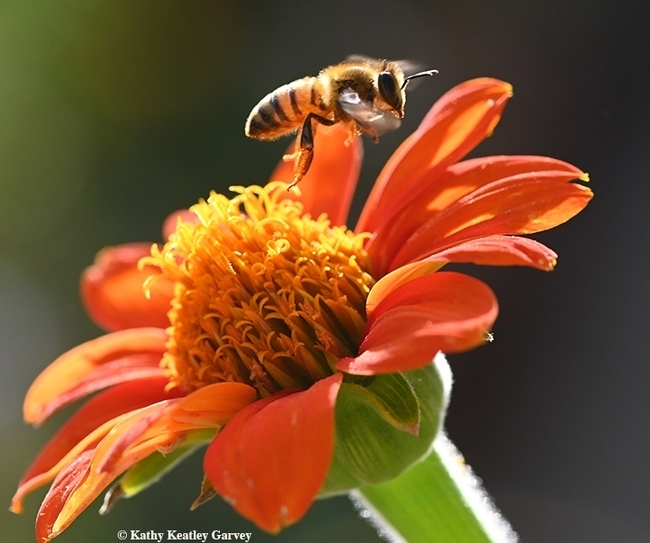
Worker bees are sterile females. Here a worker bee (forager) leaves a Mexican sunflower, Tithonia rotundifola. (Photo by Kathy Keatley Garvey)
Outstanding Research Paper on Agricultural Drones Wins Editors' Choice Award
Winning an Editors' Choice Award was a milestone for an international research team, including UC Davis entomologist Elvira de Lange. De...
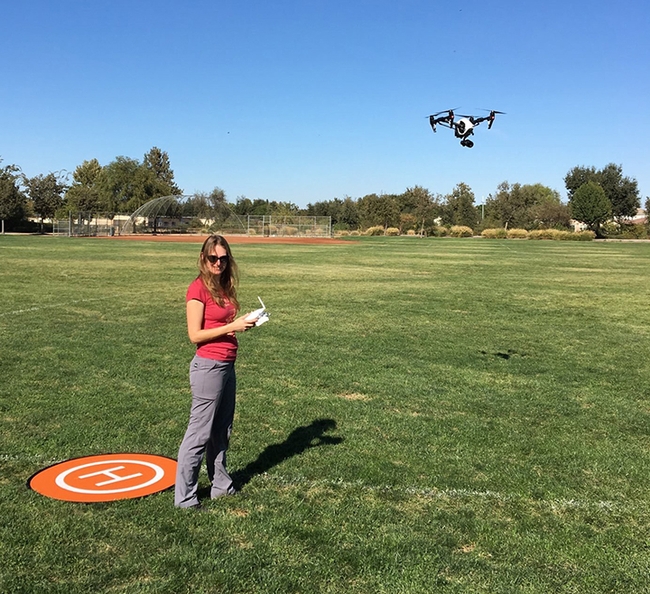
Entomologist Elvira Lange utilizing a drone. Agricultural drones, she said, are "highly versatile and have great commercial potential."
Why Drones Are Important in Sustainable Agriculture in the 21st Century
Drones... If you're thinking of apiculture, you might be thinking of drones (male bees). But if you're thinking of agriculture--more specifically...
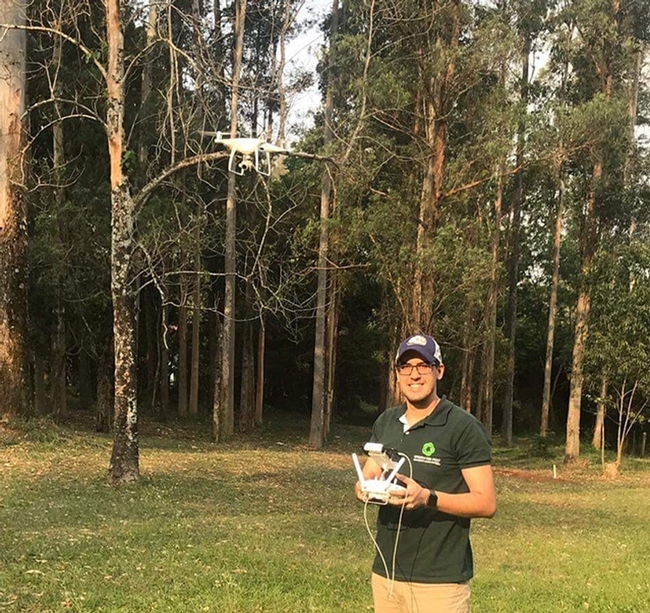
Lead author and entomologist Fernando Iost Filho of the Department of Entomology and Acarology, University of Sao Paulo, Brazil. He is a former UC Davis exchange student.
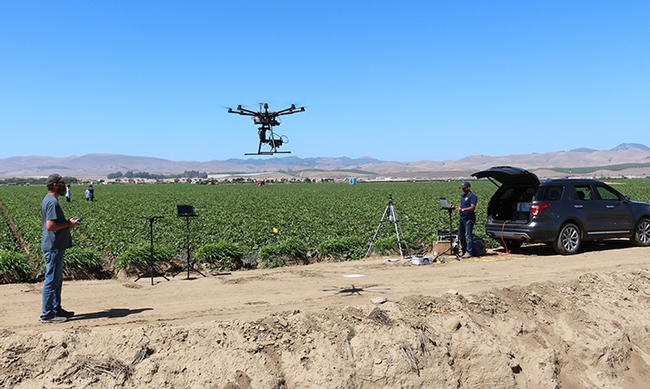
A drone over a Santa Monica strawberry field. Drones can target pest outbreaks or hot spots in field crops and orchards, the scientists pointed out. (Photo by Elvira de Lange)
UCCE helps farmers see the potential in agricultural use of drones
In the late 1800s, when automobiles started replacing horses in the United States, farmers were likely pondering how the new technology could be adapted for agricultural production. Before long, tractors revolutionized the industry.
A similar scenario unfolded in June at a UC Cooperative Extension field day in Merced County. Farmers, scientists and entrepreneurs gathered at Bowles Farm in Los Banos to learn how drones may be deployed on farms of the future to improve irrigation, fertilization and pest management practices and monitor the crop to maximize yield and profit.
Instead of driving a pickup truck around the perimeter of the field, pushing through hip-high row crops, or meticulously sampling dozens of tree leaves, a quick fly-over with the right equipment could provide farmers all the data they need to make production decisions.
This won't happen tomorrow. Regulations still hamper drone use and the cost of some equipment is prohibitive. But UCCE advisor David Doll is working with scientists at UC Merced and Fresno State to find low-cost alternatives for data collection and analysis that will make the information collected by drones of value to farmers.
“We were able to get good correlation with plant water stress using a thermal camera, however the platform is too expensive,” Doll said.
Doll's research, funded by a grant from UC Agriculture and Natural Resources, uses data from hundreds of drone flights over an almond orchard. The project has shown that monitoring perennial cropping systems from the sky presents challenges.
“Perennial crops will have water stress before the crops show stress,” Doll said. “We need to find an algorithm to identify water stress before it's too late for the orchard.”
Bowles Farming Company, which hosted the field day, flies drones over its farms three days a week, said Justin Metz of the company's technology integration team. The high-definition imagery is shared with the on-staff agronomist, who can diagnose emerging issues.
“Our use of drones is in its infancy, but we're ahead of others,” Metz said. “Knowing the capabilities is really exciting. Drones are here, and they're going to stay.”
UCCE agronomy and weed science advisor Lynn Sosnoskie attended the drone field day to gather ideas and make contacts. She believes drones have the potential to monitor crops for herbicide injury.
“I want to ground truth drone images to see if they can predict yield loss,” Sosnoskie said.
Retired pest control adviser Richard Stewart, one of about 100 attendees, is considering how drones could be used to monitor for rodent damage in irrigation ditch banks.
“I've never see anyone do that,” he said. “I'm just looking into it. It's a new idea.”


